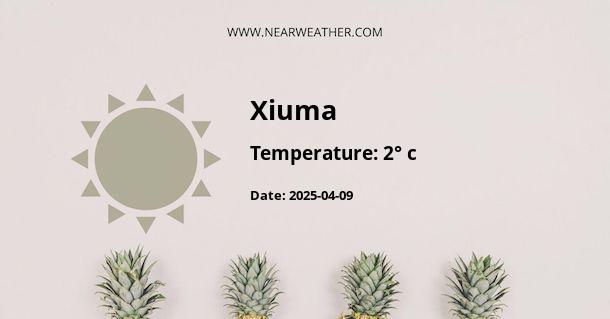Jiangqun, China: Climate and Weather Overview
Jiangqun, located in the Guangdong Province of southern China, experiences a subtropical climate characterized by hot and humid summers, and mild, dry winters. The region's climate is influenced by its proximity to the South China Sea and the Tropic of Cancer, which results in distinct seasonal weather patterns. Understanding Jiangqun's climate and weather year-round is crucial for visitors and residents alike to prepare and plan activities effectively.
Seasonal Weather Patterns
The table below outlines the average temperature and rainfall for each season in Jiangqun:
| Season | Average Temperature (°C) | Rainfall (mm) |
|---|---|---|
| Spring (March - May) | 18 - 26 | 150 - 250 |
| Summer (June - August) | 25 - 33 | 250 - 350 |
| Autumn (September - November) | 22 - 30 | 150 - 250 |
| Winter (December - February) | 10 - 18 | 50 - 100 |
As illustrated in the table, summer in Jiangqun is characterized by high temperatures and considerable rainfall, while winter experiences milder temperatures and significantly less precipitation. The transitional seasons of spring and autumn have moderate temperatures and intermediate levels of rainfall.
Annual Climate Variations
It's important to note the annual climate variations in Jiangqun to gain a comprehensive understanding of the region's weather patterns. The chart below illustrates the average monthly temperature and precipitation throughout the year:
The chart highlights the peak of both temperature and rainfall in the summer months, with relatively lower values in the winter. Additionally, the transitional months of spring and autumn exhibit moderate values for both temperature and precipitation.
Extreme Weather Events
Jiangqun, like many subtropical regions, is susceptible to extreme weather events such as typhoons during the summer and early autumn months. These intense tropical storms bring heavy rainfall, strong winds, and potential flooding, impacting the region's infrastructure and daily activities. It's crucial for both residents and visitors to stay informed and prepared for such weather phenomena.
Climate Resilience and Adaptation
In recent years, the local government and communities in Jiangqun have been focusing on climate resilience and adaptation strategies to mitigate the impact of extreme weather events and long-term climate change. Initiatives such as improved drainage systems, early warning systems for typhoons, and sustainable urban planning aim to enhance the region's resilience to climate-related challenges.
Conclusion
Understanding Jiangqun's climate and weather patterns year-round is essential for making informed decisions regarding outdoor activities, agricultural practices, and infrastructure development. With its subtropical climate, distinct seasonal variations, and susceptibility to extreme weather events, Jiangqun presents a dynamic environment that necessitates adaptive strategies and awareness. By being aware of the climate and weather trends, residents and visitors can better prepare and contribute to the region's climate resilience.
A - Xiuma's Latitude is 35.055382 & Longitude is 100.332832.
A - Weather in Xiuma is 2° today.
A - Climate Conditions in Xiuma shows broken clouds today.
A - Humidity in Xiuma is 21% today.
A - Wind speed in Xiuma is 12.53 km/h, flowing at 330° wind direction. today.
